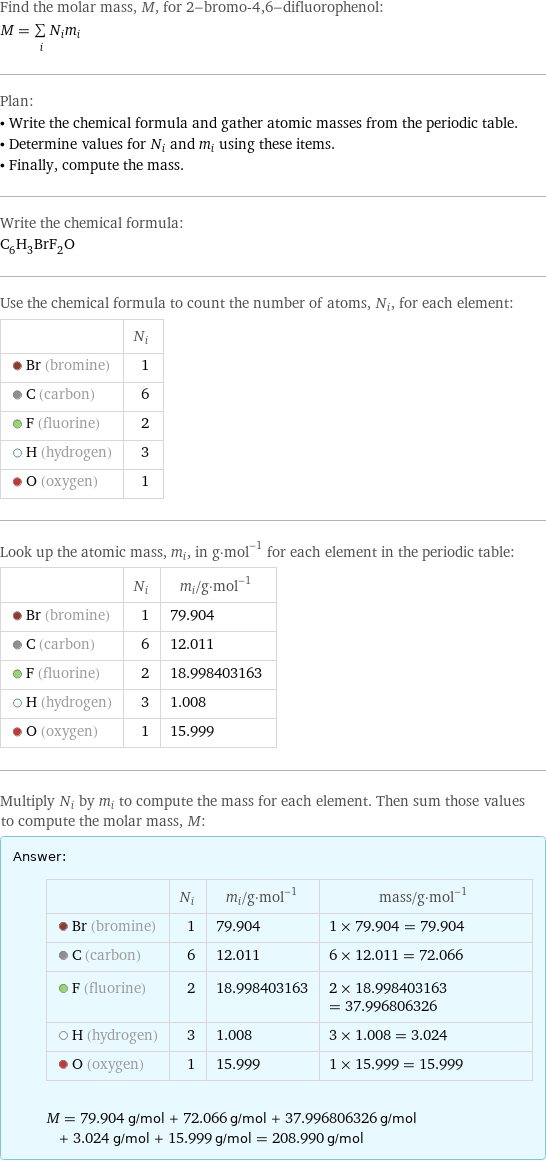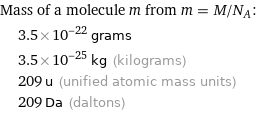Input interpretation

2-bromo-4, 6-difluorophenol | molar mass
Result

Find the molar mass, M, for 2-bromo-4, 6-difluorophenol: M = sum _iN_im_i Plan: • Write the chemical formula and gather atomic masses from the periodic table. • Determine values for N_i and m_i using these items. • Finally, compute the mass. Write the chemical formula: C_6H_3BrF_2O Use the chemical formula to count the number of atoms, N_i, for each element: | N_i Br (bromine) | 1 C (carbon) | 6 F (fluorine) | 2 H (hydrogen) | 3 O (oxygen) | 1 Look up the atomic mass, m_i, in g·mol^(-1) for each element in the periodic table: | N_i | m_i/g·mol^(-1) Br (bromine) | 1 | 79.904 C (carbon) | 6 | 12.011 F (fluorine) | 2 | 18.998403163 H (hydrogen) | 3 | 1.008 O (oxygen) | 1 | 15.999 Multiply N_i by m_i to compute the mass for each element. Then sum those values to compute the molar mass, M: Answer: | | | N_i | m_i/g·mol^(-1) | mass/g·mol^(-1) Br (bromine) | 1 | 79.904 | 1 × 79.904 = 79.904 C (carbon) | 6 | 12.011 | 6 × 12.011 = 72.066 F (fluorine) | 2 | 18.998403163 | 2 × 18.998403163 = 37.996806326 H (hydrogen) | 3 | 1.008 | 3 × 1.008 = 3.024 O (oxygen) | 1 | 15.999 | 1 × 15.999 = 15.999 M = 79.904 g/mol + 72.066 g/mol + 37.996806326 g/mol + 3.024 g/mol + 15.999 g/mol = 208.990 g/mol
Unit conversion

0.20899 kg/mol (kilograms per mole)
Comparisons

≈ 0.29 × molar mass of fullerene ( ≈ 721 g/mol )

≈ 1.1 × molar mass of caffeine ( ≈ 194 g/mol )

≈ 3.6 × molar mass of sodium chloride ( ≈ 58 g/mol )
Corresponding quantities

Mass of a molecule m from m = M/N_A: | 3.5×10^-22 grams | 3.5×10^-25 kg (kilograms) | 209 u (unified atomic mass units) | 209 Da (daltons)

Relative molecular mass M_r from M_r = M_u/M: | 209